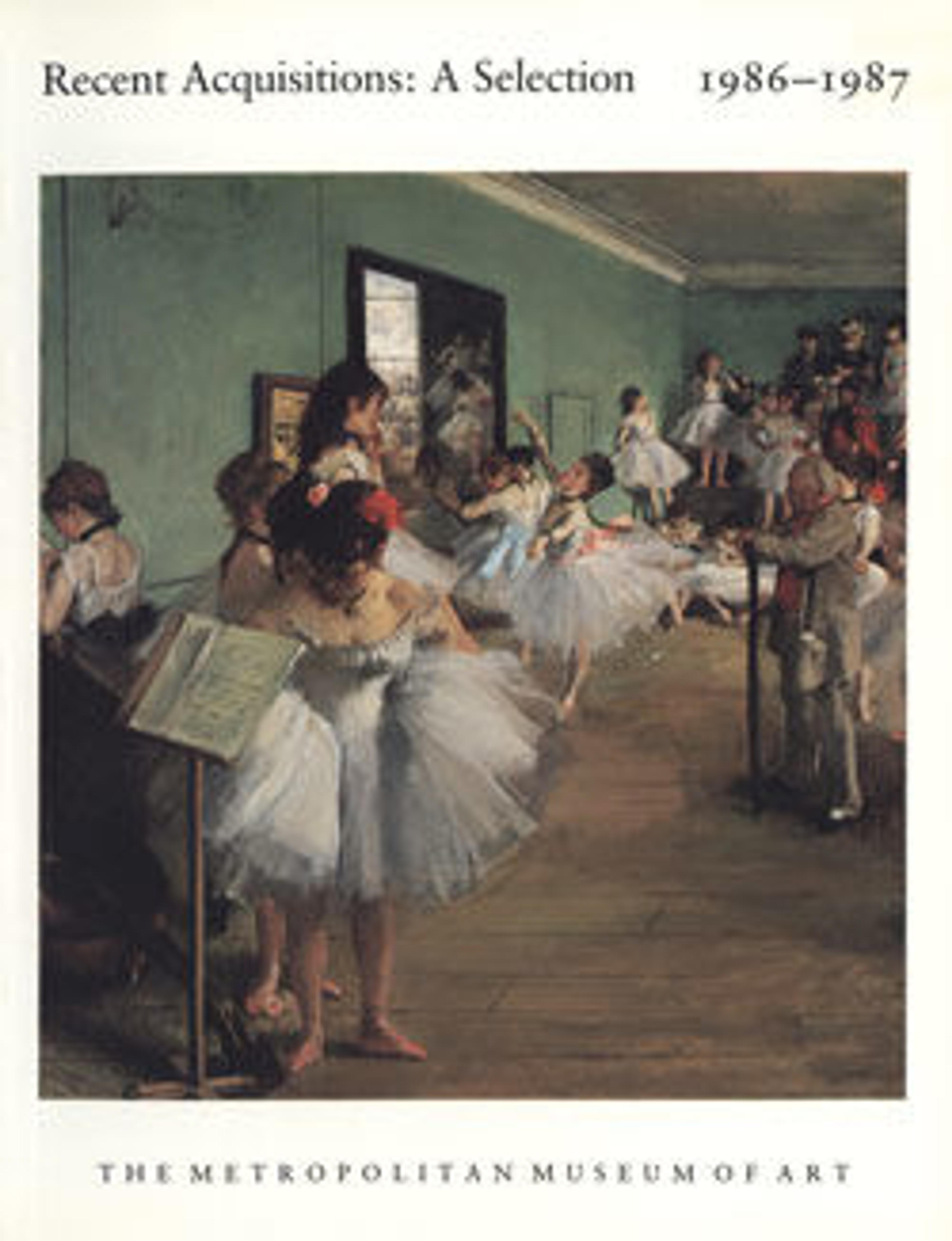Amaryllis
Tony Smith worked as an architect for over twenty years (1938–60), so it is not surprising that he approached sculpture in an architectural manner, as something to be designed with mathematical precision from geometric components. His method was to manipulate numerous small geometric solids that were cut and pasted from cardboard until a satisfactory arrangement emerged. The small cardboard maquette, or sometimes a larger version of it, was then sent to the foundry to be enlarged and cast in steel. The result often startled the artist, as the work loomed to monumental proportions.
Smith's large black painted-steel sculpture Amaryllis exemplifies his style and suggests the expressive possibilities and visual intricacies that could be achieved with a relatively limited number of elements. As in many of the artist's pieces, a single geometric form (in this case, a tetrahedron forming a triangular-based pyramid) is repeated to create a larger, more irregular configuration. In Amaryllis two of these composite forms, identical in size and shape, are joined together: one piece is placed horizontally on the ground; the other extends vertically at an angle from the top. As the viewer moves around the sculpture, its configuration changes constantly—stretching and contracting, balancing and unbalancing. This eccentricity of form reminded the artist of the unusual organic shape of an amaryllis plant. Smith has often been associated with the Minimalist artists of the 1960s. Unlike them, he did not negate content, but was always receptive to the idea of abstract sculpture evoking objects and attitudes.
Smith's large black painted-steel sculpture Amaryllis exemplifies his style and suggests the expressive possibilities and visual intricacies that could be achieved with a relatively limited number of elements. As in many of the artist's pieces, a single geometric form (in this case, a tetrahedron forming a triangular-based pyramid) is repeated to create a larger, more irregular configuration. In Amaryllis two of these composite forms, identical in size and shape, are joined together: one piece is placed horizontally on the ground; the other extends vertically at an angle from the top. As the viewer moves around the sculpture, its configuration changes constantly—stretching and contracting, balancing and unbalancing. This eccentricity of form reminded the artist of the unusual organic shape of an amaryllis plant. Smith has often been associated with the Minimalist artists of the 1960s. Unlike them, he did not negate content, but was always receptive to the idea of abstract sculpture evoking objects and attitudes.
Artwork Details
- Title: Amaryllis
- Artist: Tony Smith (American, South Orange, New Jersey 1912–1980 New York, New York)
- Date: 1965
- Medium: Painted steel
- Edition: artist's proof from an edition of 3 + 1 AP
- Dimensions: 11 ft. 3 in. × 10 ft. 8 in. × 90 in. (342.9 × 325.1 × 228.6 cm)
Weight: 4905 lb. (2224.9 kg) - Classification: Sculpture
- Credit Line: Anonymous Gift, 1986
- Object Number: 1986.432a, b
- Rights and Reproduction: © 2025 Artists Rights Society (ARS), New York
- Curatorial Department: Modern and Contemporary Art
More Artwork
Research Resources
The Met provides unparalleled resources for research and welcomes an international community of students and scholars. The Met's Open Access API is where creators and researchers can connect to the The Met collection. Open Access data and public domain images are available for unrestricted commercial and noncommercial use without permission or fee.
To request images under copyright and other restrictions, please use this Image Request form.
Feedback
We continue to research and examine historical and cultural context for objects in The Met collection. If you have comments or questions about this object record, please contact us using the form below. The Museum looks forward to receiving your comments.
